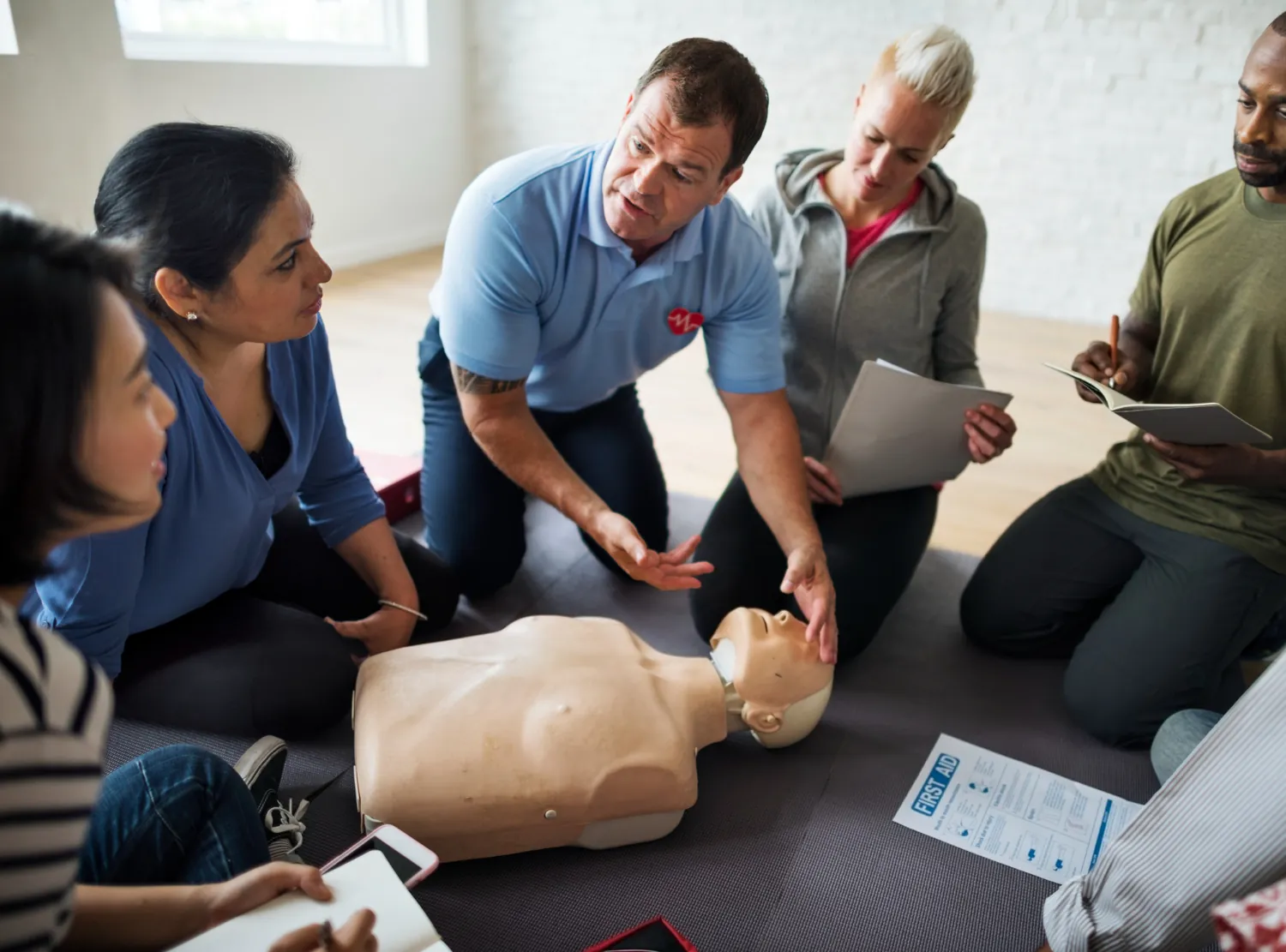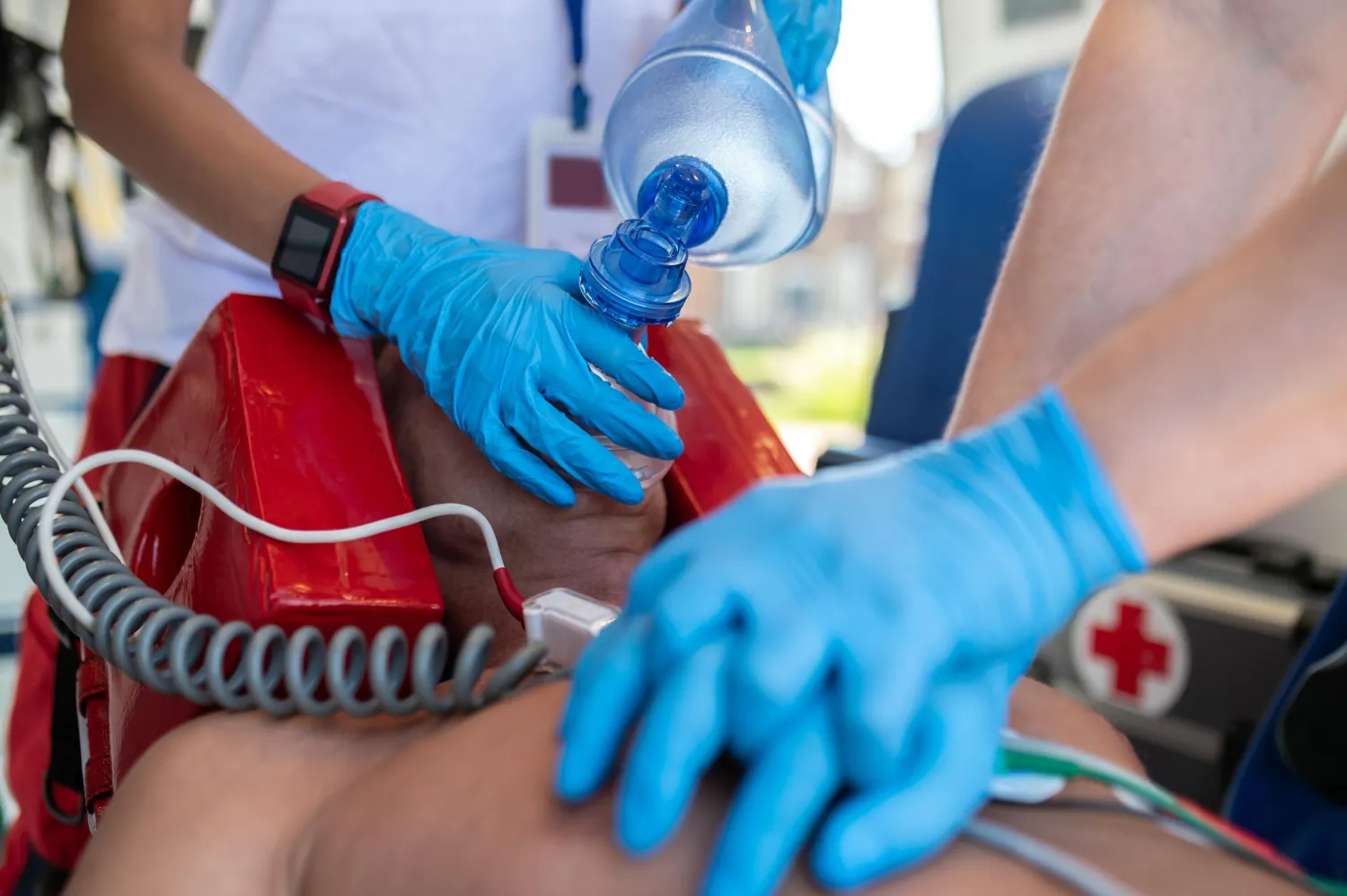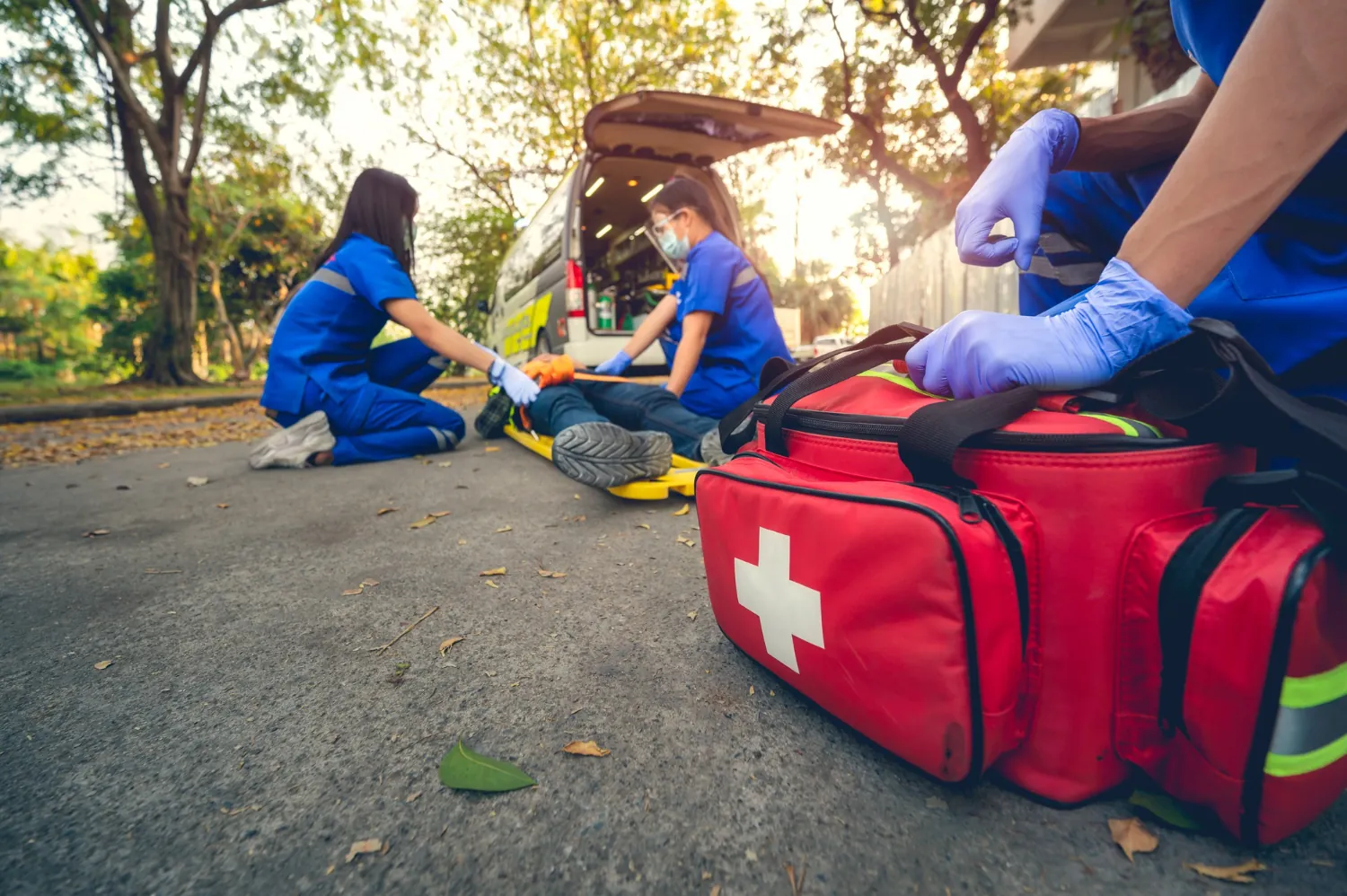Protecting Yourself from the Flames: How to Beat EMS Burnout

Burnout amongst EMS providers is a harsh reality. Even if you don't feel it all the time, there are points when the stress can become overwhelming. The risk of burnout is high, and stress levels can lead to physical issues like heart disease, post-traumatic stress disorder, and more.
The demanding nature of emergency response-long hours, high-pressure situations, and exposure to traumatic events-pushes paramedic burnout rates to a staggering 60%, according to a study published in the Journal of Emergency Medicine. If you're feeling the strain, you aren't alone.
Before the stress takes over, know this: EMS burnout is treatable, and there are steps you can take to protect yourself.
Recognizing the Signs of EMS Burnout
First of all, it's important to recognize that burnout is a common phenomenon experienced by almost every professional (even those who aren't first responders on the front lines). At some point, occupational stress can get to us all. It's not a sign of weakness but rather a signal to reprioritize self-care.
If you want to beat EMS burnout, familiarize yourself with the signs. These can include emotional exhaustion, cynicism towards your job, a feeling of detachment from patients, high levels of depersonalization, and a decline in job performance. You might also experience physical symptoms like headaches, a lack of sleep, and changes in appetite.
If the signs and symptoms of burnout escalate to the point where it's interfering with your mental health and day-to-day life, it may be time to seek assistance. Any suicidal thoughts or overwhelming feelings of anxiety or depression mean you should reach out to professional mental health resources.
Fortunately, if you recognize the signs of EMS burnout early, you can often course-correct and practice some self-care techniques to get back on track. Here's how to fortify your resistance and combat the chronic work stress of emergency response.
6 Ways to Build Resilience Against Burnout
Here's where the fightback against burnout begins. Arm yourself with these powerful strategies to develop resilience in EMS personnel:
1. Prioritize Self-Care
Self-care isn't selfish; it's essential. We've all heard the airplane oxygen mask metaphor-before you can help others, you must take care of yourself. Your well-being is crucial to your ability to serve others effectively.
What does self-care look like? It's not all spa days and trips to the beach. In fact, most self-care practices are simple, healthy habits, taking us back to basics and focusing on getting our bodies (and minds) to a state of neutrality.
Try the following basic self-care steps to keep yourself feeling energized and well:
- Aim for 7-8 hours of sleep each night (or each day if you do shift work). Consistent sleep times help, even if they're unconventional. Get plenty of sleep after long shifts.
- Eat healthy meals with plenty of fruits, vegetables, and lean protein. Cut back on sugar and processed foods.
- Stay hydrated. Focus on drinking plenty of water over coffee or energy drinks. Caffeine and energy boosters give you a temporary surge but can interfere with sleep and cause you to crash.
- Get regular exercise. As an EMS professional, you likely have bursts of physical activity throughout your shift, but set aside time for intentional workouts-exercise is a powerful stress reliever.
- Avoid substance abuse. Sometimes, we may reach for alcohol and other substances to cope with high levels of stress, but these can exacerbate the issue and cause other significant concerns.
2. Explore Mind-Body Practices
Although stress and burnout can feel like mental health issues, there's a strong mind-body connection. EMS workers face a lot of intensity on the job. We all have a physical reaction to stress that causes adrenaline and cortisol to spike, fueling a fight, flight, or freeze response. Once we come down from our worst moments, we may still feel that lingering sense of dysregulation.
Explore the brain-body connection using techniques like meditation, yoga, and deep breathing. Even if you only have a moment to pause and take a deep breath before taking action, it can help improve your response and steady your nervous system. This return to regulation can combat the effects of chronic stress on our immune system and help us cope with high levels of emotional exhaustion.
Meditation, yoga, and other regular mindfulness practices can help build our resilience to stress and improve our emotional regulation. Practice them outside the work environment to combat burnout symptoms on the job. When we face stress, we feel fortified and prepared to deal with the situation.
3. Maintain Healthy Work-Life Balance
Work-life balance isn't just about setting boundaries; it's also about respecting them. That means disconnecting when we're off-duty and giving ourselves time to disengage from our work life fully.
Look for hobbies and activities that bring you joy and a sense of accomplishment outside of those related to EMS. It can help to find unique activities that help you expel physical energy, connect with others socially, and explore nature.
A few activities to try:
- Sports, especially team sports.
- Hiking, fishing, kayaking.
- Attending live music events.
- Socializing with friends.
- Creative pursuits-painting, crafts, woodwork, music.
Take a class or join a community group to find like-minded individuals outside your job and industry. Lean into the realization that life is more than just your job.
4. Connect with Your Support System
If you're keeping your feelings and stressors to yourself, you might be amazed at how refreshing it is to share with others. Connect with your support system, whether it's family members, friends, or your significant other.
We all have social networks (not just online, but within our day-to-day lives). Many adults struggle to reach out and find new friends and social ties, but it starts with a simple smile, a light conversation, and finding commonalities. From these social ties, we can build a close connection where we can share openly and freely.
A therapist or counselor can be a great resource if you need additional support. Having a safe space to vent and express your emotions can be a transformative experience, especially if you generally have a difficult time sharing your feelings.
5. Seek Support in Your EMS Community
Sometimes, our coworkers are those who best understand the challenges and pressures of the job. When we boldly confide in colleagues, we're reminded that we aren't alone, and we all face similar frustrations and situations in the industry.
Many EMS agencies also offer peer support programs and access to mental health professionals. Reaching out, recognizing when you need help, and accepting it is a sign of strength, not weakness.
It may also help to recognize that by addressing your stress, you can lead your peers by example. Your transparency helps to break the stigma of burnout and may help others find the bravery to share vulnerability.
6. Focus on the Positive
Don't beat yourself up or hide your feelings of burnout, but at the same time, gratitude and positivity can help you recognize the good things about your job. Challenge yourself to find and acknowledge a few positive moments each day-you can even write them down!
EMS work is gratifying. Reflect on the lives you've touched and the differences you've made for others in your community. When people need help the most, we show up and assist them-that's huge! Embrace your heroic nature.
Addressing Existing Burnout
What if you're already past the point of burnout? Getting yourself out of a stressed-out state and back to a positive place can feel daunting. This is especially true if you have stress factors outside your job, such as family and relationship challenges, health concerns, or financial strain.
If you're already struggling with EMS burnout, don't hesitate to seek help. Talk to your supervisor about potential schedule adjustments or lighter duty if needed. You may even want to consider a leave of absence or explore different roles within EMS that may be less stressful.
Remember that overcoming any work burnout is a journey, not a destination. There will always be stressful moments. By prioritizing self-care, building a solid support system, and focusing on the positive aspects of your job, you can reignite your passion for EMS and continue to serve your community with compassion and dedication.
At LogRx, we understand the stress and rigors of EMS. Our company was built by EMS professionals for EMS professionals. LogRx helps you track controlled substances and keep a handle on medication inventory. Track in real-time from your handheld device (no paper tracking to add to your plate).
LogRx helps streamline a stressful task and makes it simple to run reports and remain compliant with controlled substance regulations. It may seem like a small job, but many customers report that it's like having another administrative team member!
Learn more about how LogRx can help keep your team on track by reaching out today. Let's work together to make EMS a little easier for everyone.
Categories
Recent Posts
- LogRx and Knox: How LogRx Integrates with EMS Medication Lockboxes
- Connecting Community and EMS: 7 EMS Community Outreach Ideas
- Projecting Professionalism: Why EMS Uniforms Matter
- EMT Off-Duty Response: What You Should Carry Everywhere
- Basic EMT Trauma Assessment Scenarios: Gearing Up for Certification

















.webp?t=1764713194580)
































